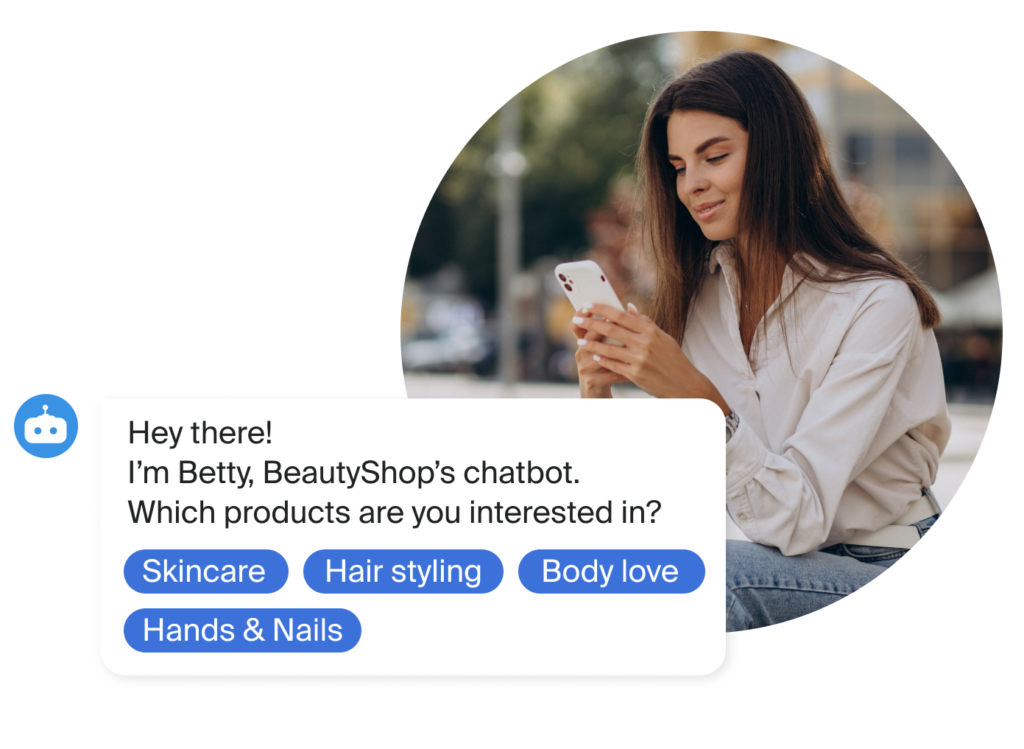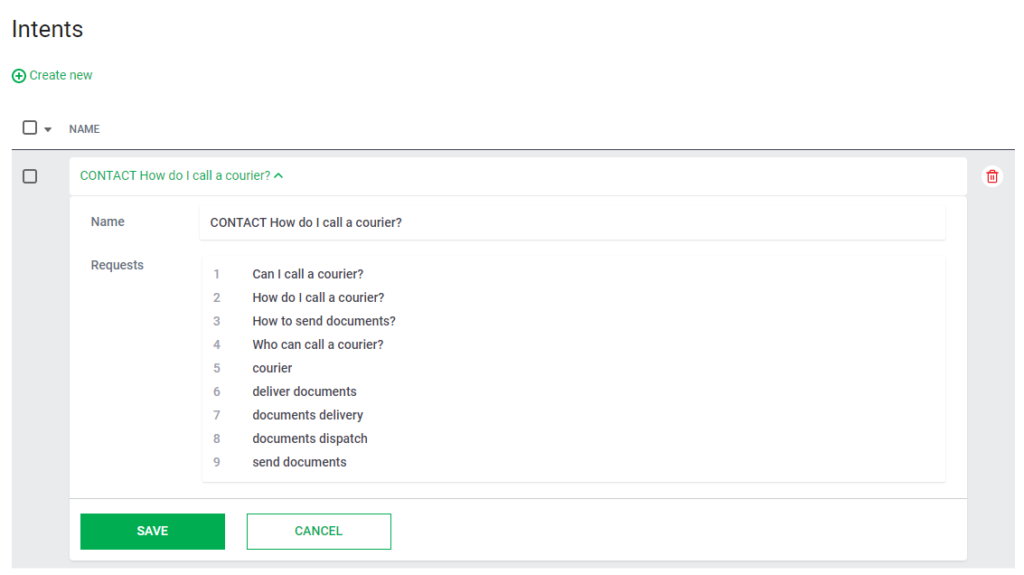Conversational AI v Traditional Chatbots
Artificial Intelligence (AI) has become an integral part of successful businesses, offering an array of benefits like enhanced efficiency, accuracy, and scalability. While they require more intense training, conversational AI chatbots are quickly becoming more popular than standard chatbots as they mimic human interaction and customers prefer them. Recent research forecasts that AI chatbots will become the primary customer service channel for around 25% of organisations by 2027. By 2026, experts believe, 1 in 10 agent interactions will be automated.
Human-like Conversations
While the conversational flow of a standard chatbot is pre-determined by a set of rules and limited by strict parameters, conversational AI is based on several complex technologies that simulate human-like conversations.
- Natural Language Understanding (NLU) enables the interpretation of human communication and context.
- Large Language Models (LLM) and Deep Learning utilise algorithms and deep neural networks to learn from previous interactions.
- Predictive Analytics explores past interactions to predict future behaviour. Intent data enables conversational AI chatbots to provide more personalised responses.
Together these simulate human interactions enabling 24/7 customer care, HR, and marketing and sales. Compared to traditional chatbots, conversational AI chatbots provide more detailed, accurate, and personalised responses to customer queries. They use customer sentiment tracking as well as more extensive and intelligent task automation to provide fast response times for a wider array of complex queries.
When conversational AI chatbots are trained correctly, they create an excellent customer experience (CX) at a lower cost than live interactions. So, let’s look at 10 expert tips for training your conversational AI chatbot.

1. Define Your Goals
The first task is to set goals by defining the use case, business challenges and customer problems the AI chatbot will solve. Create a cross-functional team to analyse business processes, customer needs, and pain points to determine the required features and functionality. Do you need conversational AI for 24/7 customer support, or to automate your marketing and sales communications? In what area of your funnel will the chatbot operate? Do you want to reduce query response times, or increase your Average Order Value (AOV) with cross-selling and upselling? If you’re seeking to cost-effectively scale your call centre at speed and free your agents from monotonous tasks, you’ll be interested to know that an impressive 77% of agents say automating routine tasks with conversational AI enables them to focus on more complex cases.
Once the use case and outcomes are set, you can drill down into key customer scenarios. In the customer support example, these would include answering FAQs, handling complaints, and information on products and services. The next task is prioritising your goals and scenarios so you can define the full scope and parameters of your AI chatbot, identify what kind of dataset you need, and create the best possible CX.

2. Curate Your Dataset
Inaccurate data can impede your AI chatbot’s ability to understand and respond to customer inquiries. If you lack an existing dataset or need to supplement it, you can assemble a new conversational collection by aggregating customer inquiries from multiple sources, including chat logs and phone call transcripts, customer emails, surveys and feedback, and social media messages. The data you gather must be an accurate representation of the customer inquiries your chatbot will encounter, and encompasses a broad range of conceivable scenarios. Once you’ve compiled your data, you need to curate it to guarantee its quality and relevance. This curation process may entail the removal of superfluous or redundant data, the rectification of errors, and the classification of data based on customer intent.
Your AI chatbot should also be capable of identifying more complex emotional interactions outside of its remit and escalating the chat to a human representative . When it fails to comprehend a query, train it to prompt the user to rephrase their question. This can help determine whether language and phrasing are the issue, or whether the chatbot genuinely lacks the answer. Also, train it to suggest possible interpretations of the inquiry by building a more comprehensive base of intents. If the chatbot is still unable to provide a satisfactory response, it should recognise this as the point of escalation. Investing time in gathering and curating your data and using it to train for all likely eventualities will optimise your chatbot’s performance, increasing the potential for an outstanding CX.
3. The Right Tone
When training your AI chatbot, enabling seemingly emotionally intelligent communication is critical. This includes elements such as tone of voice, context, and the use of emojis. The tone should reflect your brand’s personality, values and goals as well as your customer expectations. Emoji use and detection allows customers to provide quick feedback, like a simple smiley face, to show they’re content with the conversation. Training the chatbot with image recognition technology enables it to offer solutions like processing refunds without the need for a return, giving your CX a competitive edge.

4. Analyse Customer Intent
To enable correct responses with high levels of personalisation, you need to analyse and annotate the intent data in your curated dataset and use it to train the AI chatbot’s Machine Learning algorithms. (You will similarly need to annotate your entities and sentiment data). Once annotated, divide the intent data into a training set, and a validation set to assess performance.
User intent broadly fits within five categories:
- Navigation
- Information
- Transaction
- Problem Solving
- Feedback
The common scenarios include shop opening times, order tracking, product information, returning a product, making a booking, and completing a survey. Training your chatbot to comprehend intent data will allow it to better understand the purpose behind a customer’s query, grasp the context of the query from the vocabulary and phrasing, and provide the best answer. Using Natural Language Processing and ML for intent classification goes beyond simple keyword recognition and includes query analysis, pain point identification, motive comprehension, and sentiment tracking.
Of course, customers can use a variety of phrases and words that essentially mean the same thing. For example, one customer may say “good morning” others may use “howdy”, “hey” or “hello”. Make sure you train your conversational AI chatbot to understand this type of variable, using the most common words and phrases, so it recognises that they require the same response. Another training element to consider is ensuring your AI chatbot is au fait with seasonal language such as summer sales voucher codes and words used around Easter, Thanksgiving, Diwali and Christmas.

5. Craft Great Answers
Of course, you need to ensure that your sentence structure, grammar, punctuation and spelling are correct and, if you have international customers, that you use native-tongue language experts for training the chatbot in multiple languages. It’s also vital to ensure that the AI chatbot’s brand-aligned tone and personality are consistent for international users. Answers should generally not be one word unless that really is the best fit for a specific scenario: remember your goal is to be as conversational as possible. Best practice is to reaffirm the customer’s question within the chatbot’s answer so they can rest assured they’ve been understood, and the answer is relevant and correct. If a customer asks a question that isn’t relevant to your business, or requests a service you don’t provide, make sure you train your chatbot to suggest alternative services that you do offer, before escalating to a live agent if necessary.
6. Evaluate Performance
Once you’ve done a great job with your initial AI chatbot training, you need to continuously review and test to ensure that your conversational AI meets with customer approval. As you add more services and products you will have to do more training and watch out for any inconsistencies.
Determine what metrics you want to use to evaluate chatbot performance at the outset of your chatbot training. You may want to look at user engagement, conversation time, response time, specific feedback, sentiment tracking and number of escalations to a live agent. Analysing this data will enable you to identify challenges and rectify them fast, for optimised functionality and a better CX.
When you are conducting testing, define your test cases against your business and customer requirements. Then, test the chatbot’s responses, functionality, and performance across the whole range of scenarios that match your goals. You can also enable your bot to ask every customer for some quick feedback after every conversation and, from time to time, run more in-depth surveys. Compare your own testing to your customer feedback to ensure that the amendments you make align to both.
Conclusions
Great training is the key to conversational AI success and a strategic approach is essential to getting it right. Following the 6 high level steps above will put you on the path to setting achievable goals, training with quality data, creating the right tone and personality, understanding your customers and making sure that your conversational AI chatbot improves with every customer interaction.

